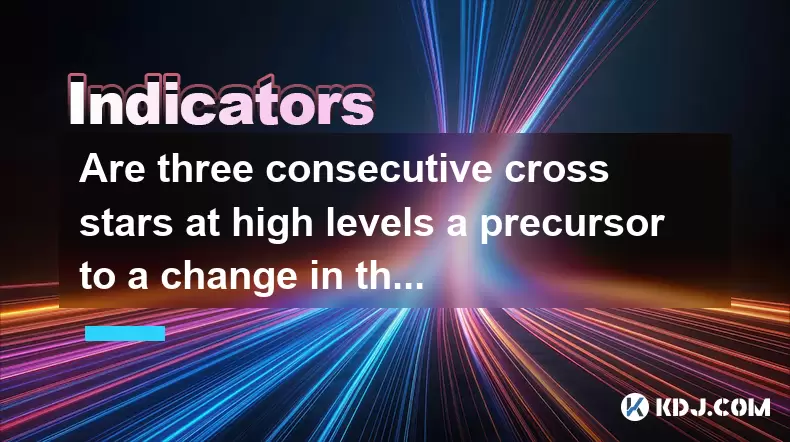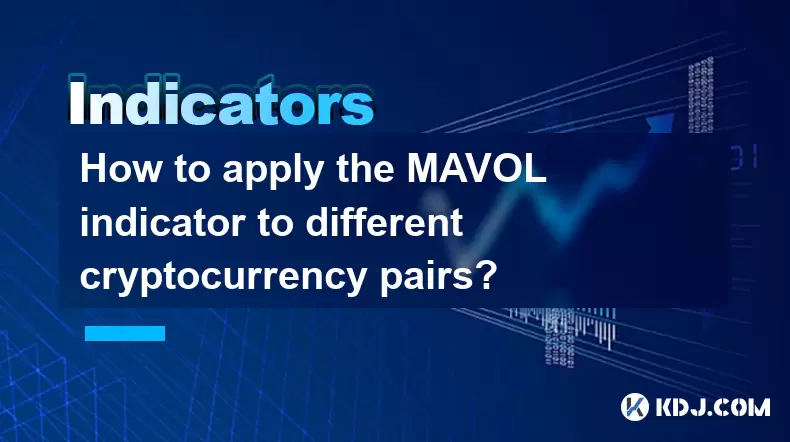-
 Bitcoin
Bitcoin $118400
0.47% -
 Ethereum
Ethereum $3836
2.20% -
 XRP
XRP $3.157
2.98% -
 Tether USDt
Tether USDt $0.9999
-0.03% -
 BNB
BNB $801.5
1.31% -
 Solana
Solana $180.9
2.07% -
 USDC
USDC $0.9999
-0.02% -
 Dogecoin
Dogecoin $0.2225
2.50% -
 TRON
TRON $0.3285
-1.02% -
 Cardano
Cardano $0.7789
2.60% -
 Hyperliquid
Hyperliquid $43.60
2.39% -
 Sui
Sui $3.892
4.41% -
 Stellar
Stellar $0.4229
3.34% -
 Chainlink
Chainlink $18.01
3.98% -
 Hedera
Hedera $0.2745
6.77% -
 Bitcoin Cash
Bitcoin Cash $582.3
3.38% -
 Avalanche
Avalanche $23.77
1.04% -
 Ethena USDe
Ethena USDe $1.001
0.01% -
 Toncoin
Toncoin $3.493
3.59% -
 Litecoin
Litecoin $110.0
2.48% -
 UNUS SED LEO
UNUS SED LEO $8.936
-0.37% -
 Shiba Inu
Shiba Inu $0.00001304
2.49% -
 Uniswap
Uniswap $9.999
1.09% -
 Polkadot
Polkadot $3.897
3.26% -
 Monero
Monero $308.6
-0.83% -
 Dai
Dai $0.9999
-0.01% -
 Bitget Token
Bitget Token $4.504
-0.04% -
 Pepe
Pepe $0.00001154
2.95% -
 Cronos
Cronos $0.1471
3.06% -
 Ethena
Ethena $0.6691
19.53%
Are three consecutive cross stars at high levels a precursor to a change in the market? Should I reduce my position?
A three consecutive cross stars pattern at high levels suggests market indecision and may signal a potential trend reversal, especially when confirmed by volume and other technical indicators.
Jun 21, 2025 at 06:00 pm

Understanding the Three Consecutive Cross Stars Pattern
In technical analysis, especially within the realm of cryptocurrency trading, candlestick patterns play a crucial role in predicting potential market movements. A three consecutive cross stars pattern is formed when three candlesticks appear one after another with small or no real body and long upper and lower shadows. This pattern typically indicates indecision among traders and may signal a possible reversal in trend.
When this pattern appears at high levels — meaning near recent resistance zones or all-time highs — it often raises concerns among investors. The cross star candles, such as doji or spinning tops, suggest that neither buyers nor sellers are in control. In a bullish uptrend, this could be an early warning sign that momentum is waning.
Why This Pattern Appears at High Levels
At elevated price levels, especially after a significant rally, markets tend to become more volatile and sensitive to news, regulatory changes, or macroeconomic factors. When three cross stars occur consecutively, it reflects hesitation from both bulls and bears. Traders might interpret this as a potential pause or even a reversal.
Each of these candlesticks represents a day (or time frame) where the price opened and closed around the same level, despite fluctuating widely during the session. This lack of directional movement suggests that the market is struggling to find a new direction. It’s particularly telling when this happens after a strong upward move, as it can indicate exhaustion among buyers.
Historical Precedents in Cryptocurrency Markets
Looking back at historical charts of major cryptocurrencies like Bitcoin and Ethereum, there have been instances where three cross stars appeared before notable price corrections. For example, in late 2021, Bitcoin displayed a similar pattern near its all-time high before entering a prolonged bear phase.
However, it's important not to rely solely on this pattern for decision-making. Other indicators like volume, RSI divergence, and moving averages should also be considered. A drop in volume during the formation of these cross stars could reinforce the idea that interest is fading, while continued high volume might imply accumulation or distribution rather than a simple reversal.
Should You Reduce Your Position?
If you're holding a position and notice three consecutive cross stars forming at high levels, it's prudent to assess your risk tolerance and investment strategy. This pattern doesn't guarantee a reversal, but it does raise a caution flag.
Here are some considerations:
- Profit-taking: If you've already gained significantly, trimming a portion of your holdings could help secure profits.
- Stop-loss adjustments: Moving your stop-loss closer to the current price might protect against sudden downturns.
- Portfolio rebalancing: Consider reallocating part of your crypto holdings into stablecoins or other assets temporarily.
It's also essential to monitor broader market conditions. If altcoins are showing similar patterns or if there's negative news impacting investor sentiment, it strengthens the case for reducing exposure.
How to Confirm the Pattern's Significance
To avoid false signals, traders often wait for confirmation after the third cross star forms. Here's how to approach it:
- Watch for a bearish engulfing candle or a strong red candle immediately following the pattern.
- Check if key support levels are broken in the next few sessions.
- Look for negative divergences in oscillators like MACD or RSI.
Some traders use fibonacci retracement levels to determine whether the pullback is normal or potentially deeper. If the price breaks below the 50% retracement level after forming the cross stars, it could signal a stronger correction ahead.
Psychological Factors Behind the Pattern
Market psychology plays a critical role in interpreting candlestick formations. Three cross stars at high levels reflect uncertainty: early buyers may be taking profits, while new entrants hesitate due to fear of overvaluation.
This psychological tug-of-war can lead to sideways movement or consolidation. However, if selling pressure begins to dominate, it can trigger a cascade of stop-loss orders, accelerating the downward move. Understanding crowd behavior and sentiment indicators can provide additional context.
Frequently Asked Questions
Q: What time frames are most reliable for identifying three consecutive cross stars?
The daily chart is generally the most reliable for spotting this pattern, though it can also be observed on 4-hour or weekly charts. Shorter time frames like 1-hour or 15-minute charts tend to produce more false signals due to increased volatility.
Q: Can this pattern appear in sideways markets too?
Yes, it can. In range-bound markets, three cross stars often form around key support and resistance levels, signaling potential breakout or breakdown scenarios. They don’t always precede a reversal but suggest a period of consolidation.
Q: How should I combine this pattern with other tools for better accuracy?
Use volume analysis, moving averages (like the 50 and 200-day EMA), and momentum indicators such as RSI or MACD. If RSI shows a bearish divergence while the cross stars form, the likelihood of a reversal increases.
Q: Is this pattern equally applicable to all cryptocurrencies?
While it can be applied across different assets, larger-cap cryptocurrencies like BTC and ETH tend to exhibit more reliable patterns due to higher liquidity and clearer chart structures. Smaller altcoins may show erratic behavior, making interpretation less straightforward.
Disclaimer:info@kdj.com
The information provided is not trading advice. kdj.com does not assume any responsibility for any investments made based on the information provided in this article. Cryptocurrencies are highly volatile and it is highly recommended that you invest with caution after thorough research!
If you believe that the content used on this website infringes your copyright, please contact us immediately (info@kdj.com) and we will delete it promptly.
- SEC, Crypto, and On-Chain: Navigating the Regulatory Maze
- 2025-08-01 02:31:40
- Bitcoin Bullish Market: How Long Positions are Boosting the Crypto King
- 2025-08-01 02:35:33
- Visa, Stellar, and Stablecoins: A New York Minute on the Future of Finance
- 2025-08-01 01:50:50
- BCH, FET, BlockDAG: Decoding the Crypto Buzz
- 2025-08-01 01:16:37
- Conflux Token, Crypto Simplicity, and WeWake Finance: A New Era?
- 2025-08-01 01:50:50
- Dogecoin, Remittix, and Analyst Targets: Navigating the Crypto Landscape
- 2025-08-01 01:55:40
Related knowledge

What does it signify when the MACD crosses below the zero line?
Aug 01,2025 at 01:43am
Understanding the MACD IndicatorThe Moving Average Convergence Divergence (MACD) is one of the most widely used technical analysis tools in the crypto...

How does the MACD histogram show momentum?
Aug 01,2025 at 01:16am
Understanding the MACD Histogram and Its Role in Cryptocurrency TradingThe MACD histogram is a visual representation of the difference between the MAC...

What is a MACD crossover?
Jul 31,2025 at 11:52pm
Understanding the Role of Private Keys in Cryptocurrency SecurityIn the world of cryptocurrency, private keys are the cornerstone of ownership and con...

How can you use the MACD histogram to determine trend strength?
Jul 31,2025 at 11:10pm
Understanding the MACD Histogram and Its ComponentsThe MACD (Moving Average Convergence Divergence) histogram is a visual representation of the differ...

What is the impact of different moving average types (SMA vs. EMA) on the MAVOL indicator?
Aug 01,2025 at 02:31am
Understanding the MAVOL Indicator in Cryptocurrency AnalysisThe MAVOL (Moving Average Volume) indicator is a technical analysis tool used in the crypt...

How to apply the MAVOL indicator to different cryptocurrency pairs?
Aug 01,2025 at 12:43am
Understanding the MAVOL Indicator in Cryptocurrency TradingThe MAVOL indicator, short for Moving Average Volume, is a technical analysis tool that app...

What does it signify when the MACD crosses below the zero line?
Aug 01,2025 at 01:43am
Understanding the MACD IndicatorThe Moving Average Convergence Divergence (MACD) is one of the most widely used technical analysis tools in the crypto...

How does the MACD histogram show momentum?
Aug 01,2025 at 01:16am
Understanding the MACD Histogram and Its Role in Cryptocurrency TradingThe MACD histogram is a visual representation of the difference between the MAC...

What is a MACD crossover?
Jul 31,2025 at 11:52pm
Understanding the Role of Private Keys in Cryptocurrency SecurityIn the world of cryptocurrency, private keys are the cornerstone of ownership and con...

How can you use the MACD histogram to determine trend strength?
Jul 31,2025 at 11:10pm
Understanding the MACD Histogram and Its ComponentsThe MACD (Moving Average Convergence Divergence) histogram is a visual representation of the differ...

What is the impact of different moving average types (SMA vs. EMA) on the MAVOL indicator?
Aug 01,2025 at 02:31am
Understanding the MAVOL Indicator in Cryptocurrency AnalysisThe MAVOL (Moving Average Volume) indicator is a technical analysis tool used in the crypt...

How to apply the MAVOL indicator to different cryptocurrency pairs?
Aug 01,2025 at 12:43am
Understanding the MAVOL Indicator in Cryptocurrency TradingThe MAVOL indicator, short for Moving Average Volume, is a technical analysis tool that app...
See all articles

























































































